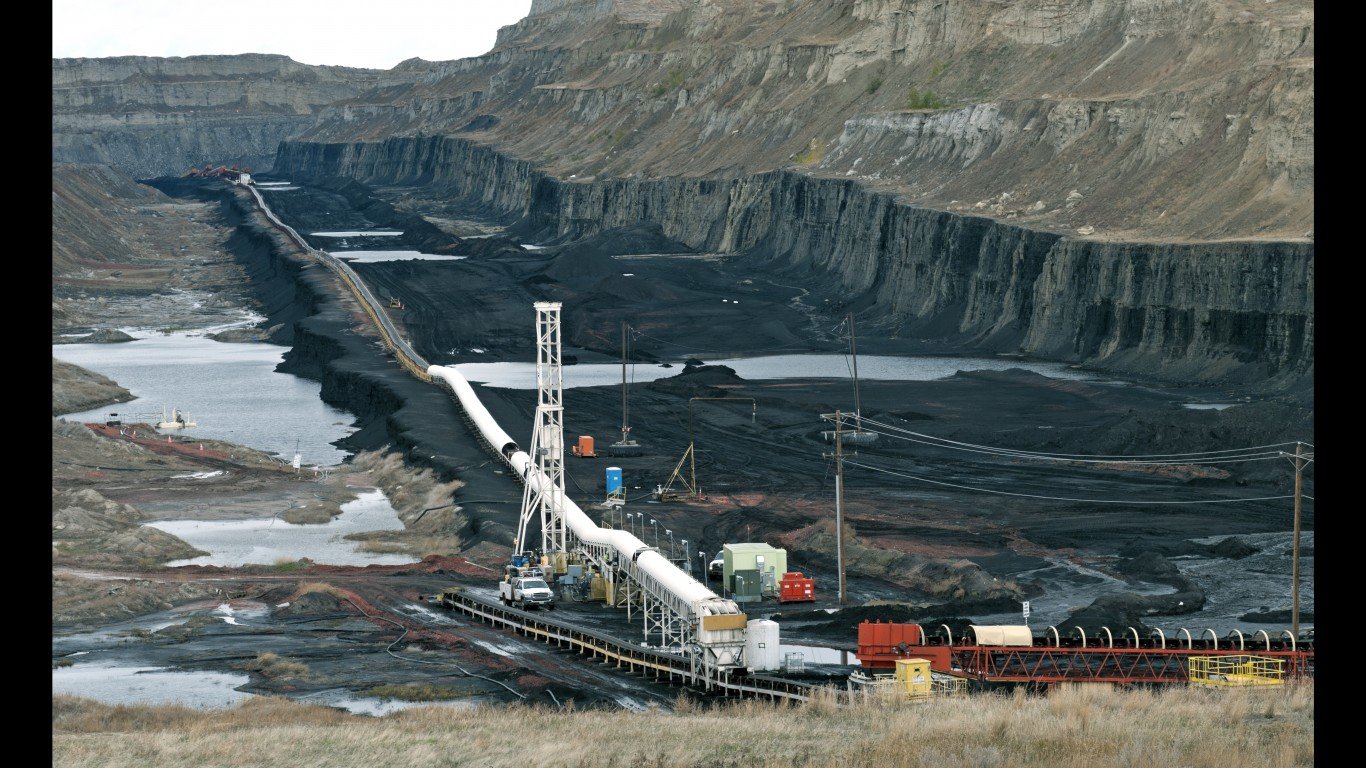

The U.S. coal industry presumably got a boost on Wednesday when the U.S. Environmental Protection Agency announced the repeal of the Obama-era Clean Power Plan and replaced it with a carbon-emissions plan based on improving efficiency at existing coal-fired power plants.
At nearly the same time, Peabody Energy Corp. (NYSE: BTU) and Arch Coal Inc. (NYSE: ARCH) announced a joint venture in which the two companies would merge operations at five coal mines in the Powder River Basin of Wyoming and Colorado.
Neither action has much chance of slowing down the demise of coal-fired power plants.
The EPA’s Affordable Clean Energy (ACE) eliminates the emissions targets of the Obama administration’s Clean Power Plan and replaces those with efficiency improvements based on the amount of heat generated by a coal-fired plant. States are being given more authority over emissions cutbacks and the federal government’s role in setting emissions standards is sharply reduced. The Clean Power Plan was challenged in court and has never been implemented.
Interestingly, the EPA believes that the ACE rules will be driven by market forces when, in fact, the market has been voting with its feet against coal for years. Just last week the Federal Energy Regulatory Commission (FERC) said that for the first time ever power-generation capacity from renewable sources (hydropower, biomass, geothermal, solar, and wind) surpassed the generation capacity of coal-fired power plants.
As the cost of renewables continues to decline as expected, coal-fired power generation becomes less and less economically viable. On top of that, natural gas-fired generation is both cleaner and cheaper than coal-fired generation. That, too, is not expected to change.
Nicholas Steckler, head of U.S. power at BloombergNEF summed up coal’s predicament this way: “Coal is inferior to natural gas in many ways today — it’s less flexible, it’s higher cost, even its fuel is generally more expensive, and, of course, it’s dirty. It has so many reasons stacked against it.”
Nothing that the Trump administration can reasonably do is going to change that.
The Peabody-Arch joint venture may be a last-gasp attempt to salvage a dying industry. The two firms hope to boost sales of coal by lowering production costs. They expect to average about $120 million in cost savings annually over the next 10 years.
As Steckler points out, though, the cost of fuel is just one aspect of the total cost of burning coal to generate electricity. In order for the EPA’s new ACE plan to work, six new technologies have been identified as the “best system of emissions reductions” (BSERs) that the EPA identified as demonstrating “technical feasibility, cost, non-air quality health and environmental impacts, and energy requirements.” Each would certainly require additional investment in existing coal-fired plants and the coal industry has little control over those additional costs.
In August of 2016, the U.S. Department of Energy analyzed the cost of retrofitting two electricity-generating units at a four-unit plant in Colstrip, Montana. Two of the four units were to be shut down in 2022. Last week, the plant’s owners announced that the two units will be shutttered at the end of this year, citing the rising cost of coal from its supplier, Westmoreland Coal’s Rosebud mine in Montana.
To upgrade the remaining two units to reduce carbon emissions by 30% to 47% would cost $1.2 to $1.4 billion the analysis concluded. And that incorporated selling carbon dioxide captured from the emissions stream to help offset the cost. Over 25 years, the sale of carbon dioxide was estimated to bring in $3 billion to $4.4 billion a year in new revenue, or about $120 million annually.
It is virtually certain that the ACE plan will be challenged in court by environmental groups and some of the states. If that challenge reaches the U.S. Supreme Court, the Trump administration’s defense that the Obama administration overstepped its authority with the Clean Power Plan may prevail, thus establishing the limits of the EPA’s regulatory power under existing law. Such a ruling would effectively tie the hands of any future administration to regulate carbon emissions.
One thing the ACE plan won’t change, however, is the economics of electricity generation and it is unlikely to appeal to the country’s largest electricity generators. NextEra Energy Inc. (NYSE: NEE) has set a goal to reduce its carbon dioxide emissions rate by 67% by 2025. Xcel Energy Inc. (NASDAQ: XEL) plans to reduce carbon dioxide emissions by 80% by 2030 and eliminate them entirely by 2050.
Take This Retirement Quiz To Get Matched With An Advisor Now (Sponsored)
Are you ready for retirement? Planning for retirement can be overwhelming, that’s why it could be a good idea to speak to a fiduciary financial advisor about your goals today.
Start by taking this retirement quiz right here from SmartAsset that will match you with up to 3 financial advisors that serve your area and beyond in 5 minutes. Smart Asset is now matching over 50,000 people a month.
Click here now to get started.
Thank you for reading! Have some feedback for us?
Contact the 24/7 Wall St. editorial team.
 24/7 Wall St.
24/7 Wall St.


